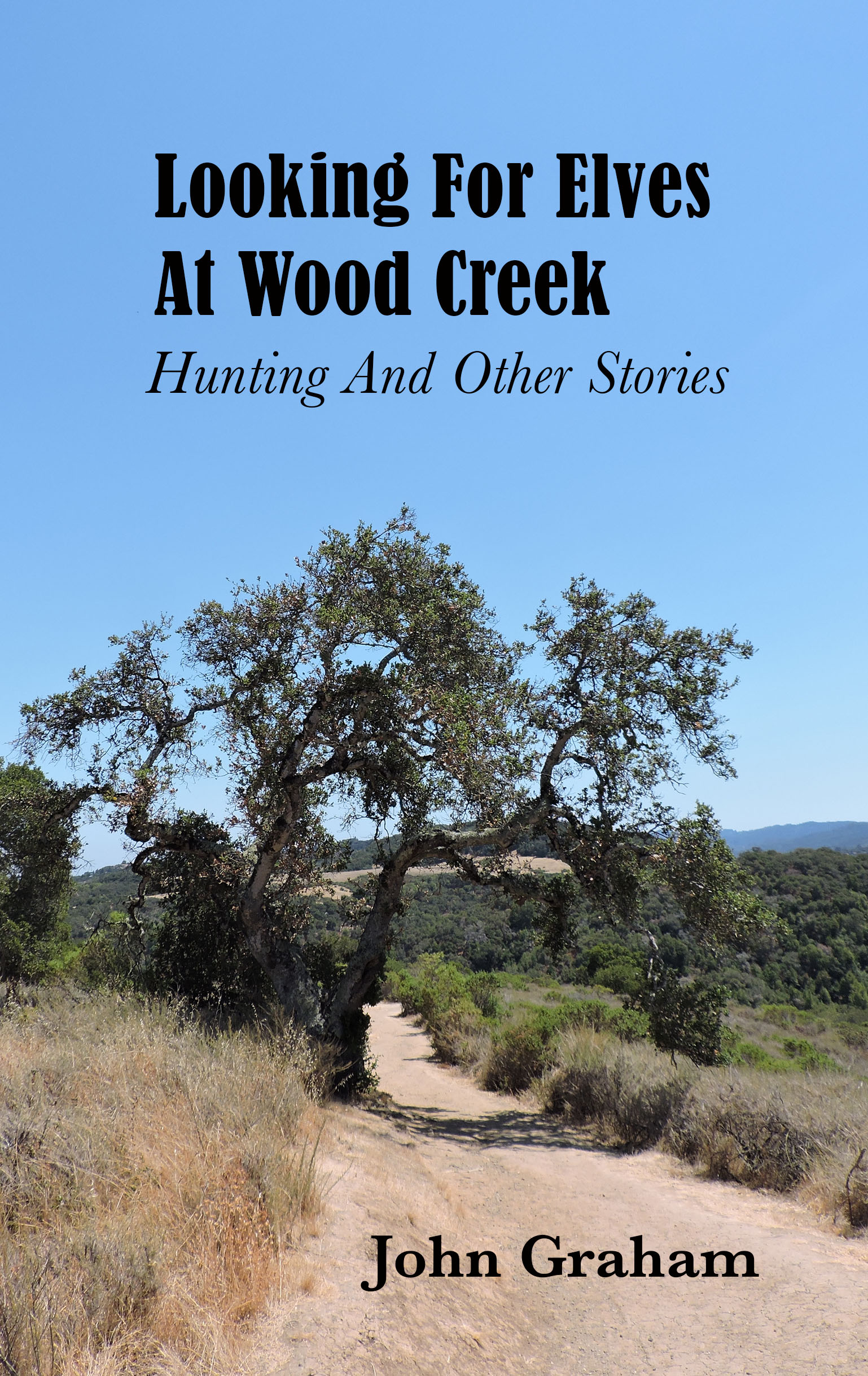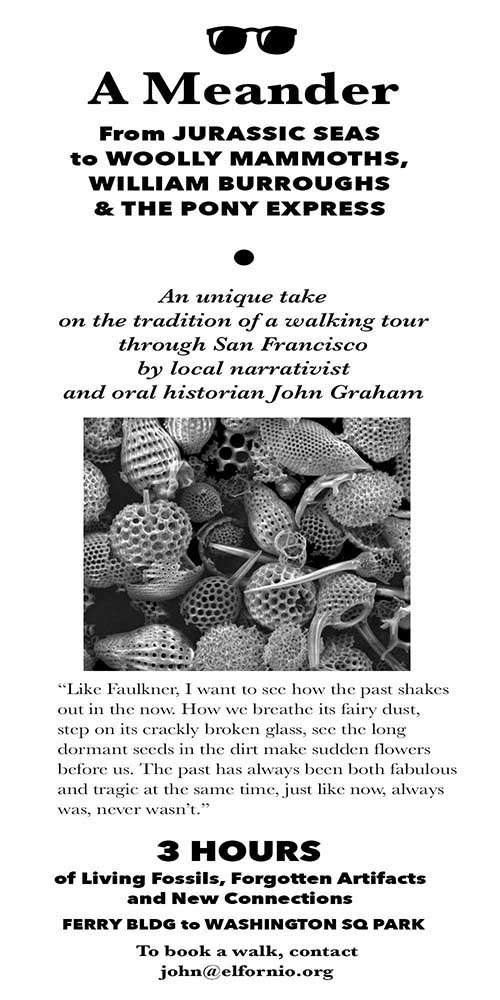A collection of copy and descriptive writing for various publications
and companies by John Graham.

For LIVING GREEN DESIGN (www.livinggreen.com)
Cast Bronze Persian Astrolab
Luciano Tempo’s predilection for bringing the past and the present together lives in this solid reconstruction of an astrolabe. With allusions to the Antikythera Mechanism, the astrolab is the ancient world’s answer to IBM’s Watson, able to examine any number of conundrums in spherical astronomy. Greek, Arab, Persian and European scholars tracked the heavens with such hand-spun machinery. With engraved notation and decoration.
Sliced and Polished Ancient Ammonite Fossil
This fossil of a fascinating creature wiped out by the asteroid strike of 66 million years ago stands as a marker. It is both the animal that grew from its youth only to die years later in the same event that killed the dinosaurs, and it stands as a marker for that planetary moment. While many ammonite “fossils” are manufactured, this real time artifact sits before us looking from the past, a marvel that once swam in a Cretaceous ocean.
Carved Wooden Statue of Phra Mae Therani, the Thai Earth Mother
Goddess Wringing The Cool Waters Of Detachment
Out Of Her Hair
A well weathered carved and painted wooden statue of Phra Mae Therani, the Thai Earth Mother goddess wringing the cool waters of detachment out of her hair to drown Mara the demon sent to tempt the Buddha away from his path towards enlightenment. The water from her hair created a flood that swept away the evil Mara and her army.
Handmade Wooden Model Vintage Speed Boat
Small details like an air horn and onboard cleats add flair to this precious recreation of a mid-century speed boat. Just look at the oak slats and painted lines.
Handmade Wooden Model Prohibition Rum Runner
A fond recreation of a prohibition era steam-driven rumrunner. Even the rope is coiled at the bow, with the anchor ready to be tossed overboard. The contraband liquor is stored under deck.
Handmade Wooden Model Pleasure Boat
This cute blue harbor cruiser barely makes it outside the breakwater, but what fun! A little red and white lifesaver is at the ready in case of rescue.
Drawings Of Maya Ruins
Mexican-born artist Jorge Kuhliger Bertoni’s study of Mayan culture and studio art technique brought him to the actual sites of this ancient culture. Each of the renderings featured here were wrought in situ. Considered masterworks in the genre, each of the pieces was executed on paper using various charcoal, wax and pencil methods.
Bronze Mythical Sea Serpent
From the imagination of generations of fisherman, this wonderfully gestured bronze sea serpent comes as a pair or alone. Scallop shells decorate the edges of the foundation of this single cast bronze Luciano Tempo design.
Fossilized Fish Slab
We love beauty at Living Green, whether in artistry or the natural world.
In this instance, the beauty of the natural world can be found in this dramatic fossil slab from the Eocene Epoch features a mass mortality event of the herring-like Knightia fish genus. The piece was excavated from the Green River Formation located in the modern day Rocky Mountains.
Framed and Glassed Pressed Botanical Specimens
Five framed and glassed botanical prints. The leaves of each plant have been pressed and inked onto vellum, rubbed with bone tools to transfer the plant and the ink. The plant material has remained intact, mixing with the ink on to the vellum to create a natural glue and, thus, the impression.
Bronze Cast Driftwood Chandelier
Reminiscent of Deborah Butterfield’s cast bronze driftwood-constructed horse sculptures, this chandelier by Luciano Tempo has all the classic, unique lines of manzanita branches. The piece is wired and ready to go.
Reclining Orange-Gold and White Buddha
This is one of the more contemplative, even casual reclining Buddhas. From the Kathyrina Collection, this gorgeous lay-about is from Burma. He is a dreamer. Painted white feet and gold-orange robes jump at the beholder. The hands and feet are those of a person moving about, sleeping rough, seeking the reward to recline, and lie down from the journey.
Cast Bronze Urns With Grape Leaf Motif
This pair of Luciano Tempo cast bronze urns are large and feature raised grape leaves, clusters and flowers circling each of the urns. Perfectly suitable for indoors or outdoors. Accommodates both ashes and/or wine—your choice.
Immaculate Bronze Statue of Quan Yin,
the Goddess of Mercy And Compassion
An important deity used in feng shui, this Quan Yin bronze is originally from Japan. Its skin is smooth, its countenance at peace and for a late 19th Century piece its design approaches the modern. Her small vase holds the nectar of wisdom.
Pair of Hand Painted Japanese Panel Screens With Birds
This rare Japanese offering comes as a pair, both featuring water color hand painted birds and their floral surroundings on paper. A crow, finch, falcon, duck and heron are just some of the birds set among cherry blossoms and irises. Sold only as a pair.
Veronese Rose Marble Sphere with Brass Rays On Travertine Base
With a nod to Thirties surrealism—and a wink to Tesla—this marble sphere with brass rays calls attention to itself from across the room, or the focal point in the garden. A unique Luciano Tempo creation.
17th Century Veronese Wooden Saint Statue
From Luciano Tempo’s personal collection, this carved wooden statue of a saint is from Verona, Italy, dating from the 17th Century. Dressed for an annual festival or standing bare, the piece evokes a world before our time.

From “Looking For Elves At Wood Creek
Hunting And Other Stories"
August in California
When August arrives in California I figure it’s Fall. It may not exactly be Fall on paper, but it’s the set-up for Fall. It can be seen in heavier orange afternoons floating a haze. Green is gone. The cougar side of summer pads in. The sun shifts, the wind with it, Emily Dickinson suggesting “there’s a certain slant of light . . .” Although our belle is speaking of Winter, I use the quote when I hear people say that California doesn’t have seasons.
They’re just more subtle. The tilt of the globe, the sun and its horizon are all planet-wide. Seasons can’t not happen. All the jokes in the world can be made about seasons in California (I think Mark Twain has twenty-three of them). August will always be the adolescent version of Fall. The kid may be a busser now, but by Thanksgiving surely a waiter.
When you finally recognize the coming of Fall in California—even the little bits to the big reveal—it’s a step in perception. It attaches its glow to you when you hang your eyes on the kind of orange that it is. It’s as good as moonlight in Vermont, August in California.
On Birds
If you are not familiar with the Northern Flicker, it is essentially a woodpecker. Not as big as a pileated woodpecker, but bigger than an acorn woodpecker—and not black, white and red.
The Northern Flicker is light olive gray—or so—with odd prints on its body. When it flies away from you, its back has a white area that shows betwixt the moving wings. Its underwings can be rust colored or yellow warbler yellow. It can be all spotty on the body and the wings, with a black bib under the head at the neck. A bright red dab appears at its jowl. If you are learning about birds and see it for the first time, it comes off as eccentric and exciting to note. The only other local oddball that I can think of at its size is the magpie.

From A Meander, a walking tour guided by John Graham
(This tour was originally designed for Context Travel, Personal Tours
For The International Traveler).
On San Francisco As An Innovation Hub
San Francisco is a place where one technology is constantly replacing another technology. Each technology can be a device or set of values. It is an innovation. Every innovation is a brand. And each brand is a consciousness. Got milk?
On San Francisco History
Like Faulkner, I want to wonder what it was like just before this or that moment in local history, how here the California rancheros lived, faded or ended. I like how the past shakes out in the now, how we breathe its fairy dust, step on its crackly broken glass, see the long dormant seeds in the dirt make sudden flowers before us. We pick up a Moorish spur in the mud and ride home with it.
The past was tragic and fabulous at the same time, just like now—always was, never not.
On California Mission Architecture
Today it would be difficult to imagine Taco Bell, or any of California’s mission-style shopping malls, as the thatched roof, hole-in-the-ground establishments that Junipero Serra’s original missions were. Not until the the fireproof, red tile roofs introduced by Padre Fermín Francisco de Lasuén—Serra’s replacement—did the “look” of the California missions begin to take form. Father Junipero Serra may have founded the California mission system, but Fray Lasuén’s engineered the Bell Beefer.
Countless shopping malls and courthouses around California are wrought in the Mission Style: red-tiled roofs, white walls, bell towers. They became fractals spreading from one shopping center to the next, non-Taco Bell franchises franchising—ante up and have a salsa named after you. Of particular favor are the small electrical vaults on the roofs of the main structures. They are like maquettes for the larger model, as if six inch tall padres and Indians could be seen milling about the unintentional diorama. That kind of structure is all over central and southern California.
On Secularized Architecture
Just down the street from Kelham’s building is 130 Montgomery, the most “modern” of the secularized buildings discussed here. Designed by the O’Brian Brothers and Wilbur Peugh in 1930, this Art Deco beauty is so modern that it is Streamline Moderne (with a fancy “e” at the end). Its lines and sly Mayan-influenced ridges are meant to reflect the busy life style of the emerging urbanite, jotting down the street.
Here, the keystone piece on the front of the building is a bas relief open book. It is tall and its pages blank, as if it is missing the text. As no weight, again, is really distributed on the book detail, it functions as another graphic design element. Its blankness is like a saintless niche, nodding to the past but designed to say nothing in the now. The open pages would have had writing at one time. It could have been scripture, jurisdiction, the Ten Commandments, even a pillar with Hammurabi’s code could suffice. But here they’re blank, unobtrusive rhetoric, a book without words created not to offend. It is a moment to have arrived at. Instead of being told what to know, we can walk away with our own thoughts. What is present is our own private opinion.
This is the secularization of architecture.